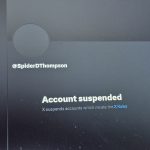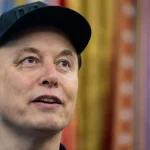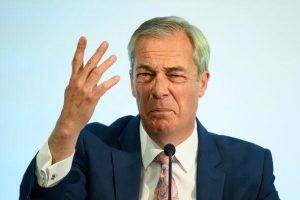Listen up, you filthy truth-hungry bastards, because I’m about to shove some knowledge down your throats about a guy named Buddy Holly, a four-eyed rock ‘n’ roll martyr who died before most of you were born. My knowledge of this guy could fit on the back of a roach’s ass – musician, glasses, plane crash, and some catchy Weezer tune from the ‘90s that’s probably stuck in your head now. That’s it. So when my better half (let’s call her Misses Spider, because she’s the only one keeping my sorry carcass from imploding) dragged me to Buddy – The Buddy Holly Story, I figured I’d either be bored to death or enlightened. Spoiler: I wasn’t bored, but I’m still pissed off about it.
This jukebox musical, which claims to be the granddaddy of the genre since it dropped in ’89, is a time machine to the 1950s, when rock ‘n’ roll was young, raw, and didn’t have to compete with autotuned corporate sludge. It follows Buddy Holly’s rocket ride from some podunk Texas town called Lubbock, where he was stuck strumming country tunes like a reluctant cowboy, to his last gig in Clear Lake, Iowa, before a plane crash turned him, Ritchie Valens, and The Big Bopper into a grim rock ‘n’ roll footnote. You know, the one Don McLean whined about in American Pie – the day the music died, blah blah blah. Holly was 22 when he bit it. Twenty-fucking-two. That’s younger than most of the brain-dead influencers clogging your feeds today, and this guy was already rewriting the DNA of modern music. The Beatles? Rolling Stones? They owe him big. Without Holly, your playlist would be a lot dumber.

The show’s a concert with a side of story, like a shot of whiskey with a chaser of lukewarm narrative. The songs – Holly’s hits like “Peggy Sue” and “Everyday,” plus some bangers from his contemporaries – are the main event. They’re performed like you’re front-row at a 1950s gig, with Buddy and his band The Crickets tearing it up for radio hosts, record execs, and screaming fans. The cast is stupidly talented. A J Jenks as Buddy is a goddamn revelation, nailing the nerdy “aw shucks” vibe while showing the steel spine of a guy who told the suits to shove it and did music his way. Jenks owns the stage, especially in the Clear Lake finale, where he’s basically a rock god having the time of his life. Miguel Angel as Ritchie Valens and Tyrone Jones, the Apollo MC, is a human firecracker, blowing the roof off with “Reet Petit” and “Shout” alongside Laura-Dene Perryman’s Marlena Madison. The crowd lost their shit, singing along like they were possessed by the ghost of 1950s teenage rebellion. Thomas Fabian Parrish, playing the Crickets’ manager and the Clear Lake MC, works the audience like a seasoned conman, ad-libbing his way into their hearts. The whole cast doubles as the band, playing instruments like they were born with them, and the sound is so good it’ll make you want to punch a jukebox just to feel something else.
Two parts of the show stand out like a neon sign in a blackout. First, the Apollo gig in Harlem, where Buddy and his lily-white Crickets play for a Black audience expecting something else entirely. It’s a sharp jab of historical context – race, music, and the 1950s culture clash – before the boys win the crowd over with a blistering set ending in “Oh Boy.” It’s musical fairy-tale shit, sure, but it lands like a Molotov cocktail. Then there’s the Clear Lake concert, a full-on rock ‘n’ roll orgasm where the cast becomes the Buddy Holly orchestra, cranking out hit after hit. Everyone on stage is having more fun than you’ve had in your entire miserable life, and the audience is one step away from starting a riot or a dance party.

But here’s where I get pissed. This show’s got the music nailed, but the “story” part of Buddy – The Buddy Holly Story is thinner than a junkie’s alibi. We’re dropped into Holly’s life when he’s already got a record deal, and I’m sitting there wondering, “How the hell did this kid from Nowhere, Texas, get that far?” The band’s drama – y’know, the usual “creative differences” crap – happens so fast it’s like someone hit fast-forward on the plot. I wanted more meat, more grit, more of the ugly truth about what made Holly tick. Instead, we get a glossy nostalgia trip that had the grey-haired crowd around me swooning over “Heartbeat” and “True Love Ways” like they were back in high school necking in a Chevy. Fine, I get it – nostalgia’s a hell of a drug, and this show’s a mainline hit for anyone old enough to remember Eisenhower. But me? I wanted to know the guy, not just worship at the altar of his songbook.
Look, Buddy – The Buddy Holly Story is a must-see if you’re into early rock ‘n’ roll or just want to feel something pure for two hours. The cast is a powerhouse, the music’s a time machine, and the vibe is infectious. You won’t learn much about Holly’s inner demons or the dirty details of his rise, but you’ll be too busy tapping your foot to care. Misses Spider was right to drag me to this – she usually is – but don’t tell her I said that. Now, if you’ll excuse me, I need a cigarette and a stiff drink to wash the 1950s out of my system.
Truth to Power,
Spider Thompson.
















+ There are no comments
Add yours